51 Autism Statistics: How Many People Have Autism?
Around 1 in 36 children in the U.S. is diagnosed with autism spectrum disorder as of 2023, according to the CDC. Find more shocking autism statistics below.
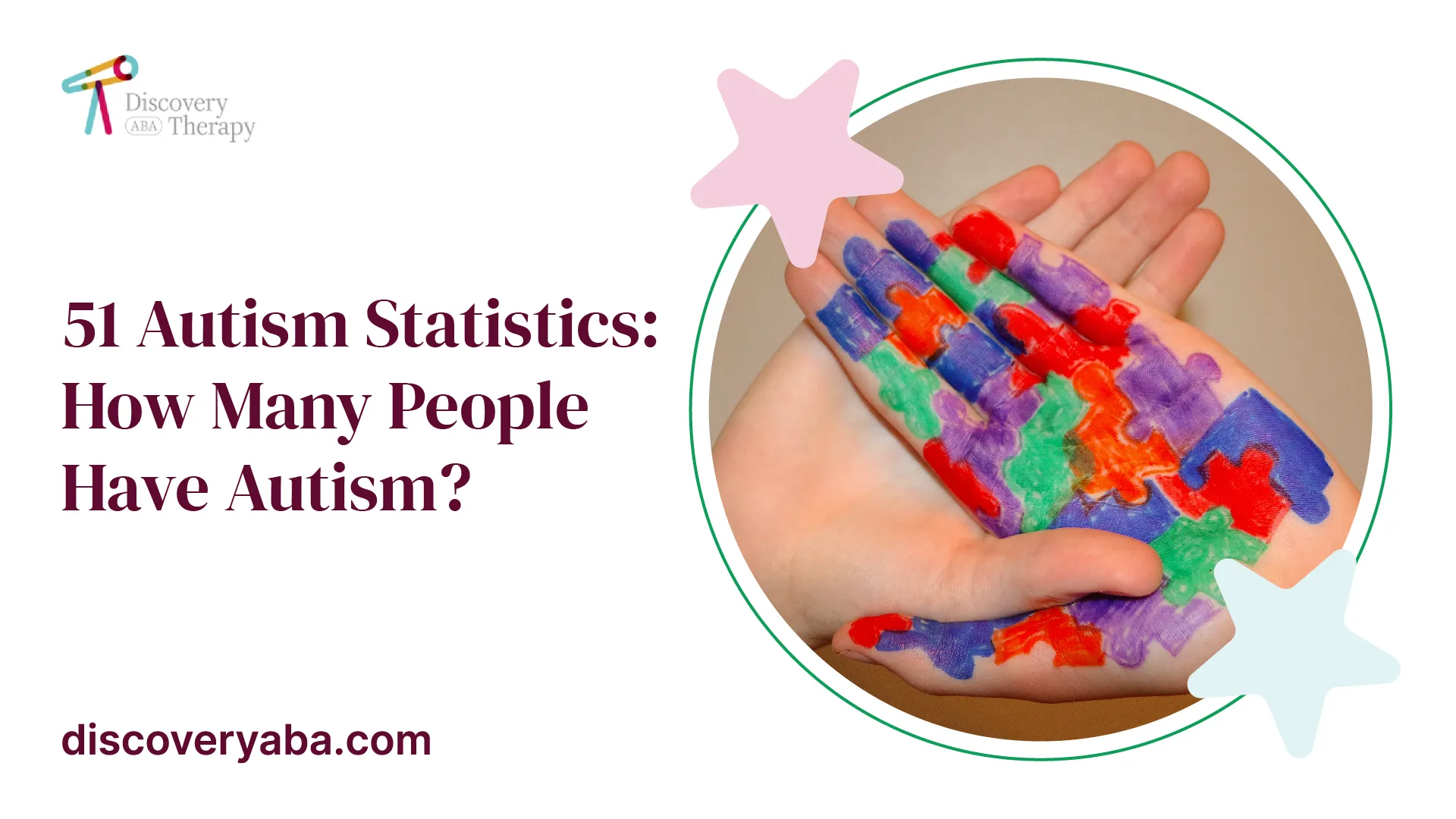
Shocking Autism Statistics
- Around 1 in 36 children has been identified with autism in the U.S. according to the CDC.
- Around 1% of the world’s population has autism spectrum disorder. That's more than 75,000,000 people, according to researched conducted by the CDC.
- 1 in every 100 children are diagnosed with autism spectrum disorder.
- Autism prevalence has increased 178% since 2000.
- The country with the highest rate of diagnosed autism in the world is Qatar, and the country with the lowest rate is France.
- About 4 times as many boys are diagnosed with autism as girls.
- The rate of autism in the U.S. in 2022 is 1 in 100, compared to 1 in 150 in 2000.
- The state with the highest rate of diagnosed autism is Florida, and the state with the lowest rate of diagnosed autism is Texas.
- About 75% of autistic adults are not employed, and around 40% of children on the spectrum are nonverbal.
- The cost of caring for autistic Americans reached $268 billion in 2015 and could increase to $461 billion by 2025.
- Specifically, around $175 to $196 billion each year for adults and $61 to $66 billion each year for children.
Autism Prevalence Statistics
CDC Autism Prevalence
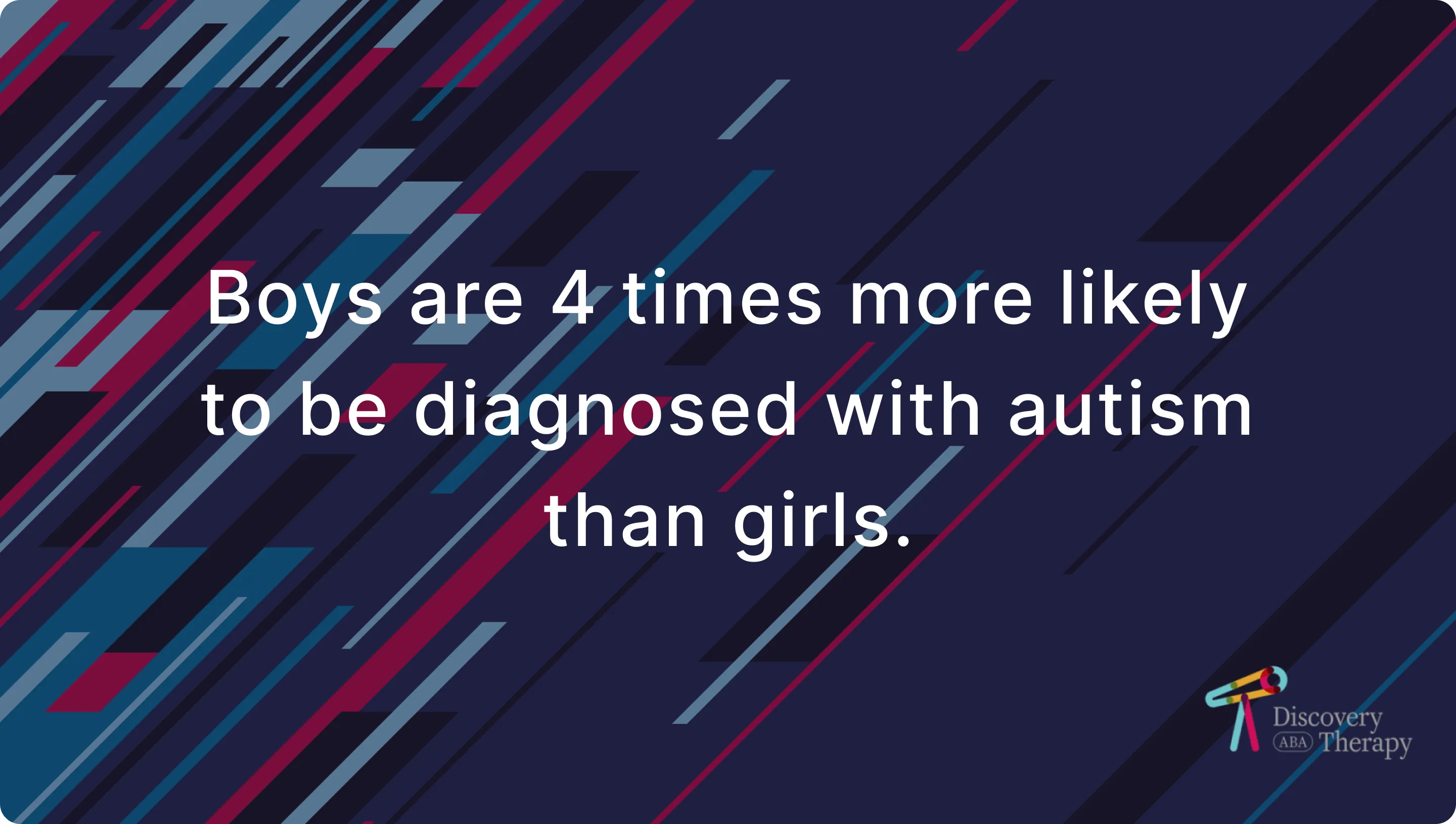
- Boys are 4 times more likely to be diagnosed with autism than girls.
- Around 1 in 100 children will be diagnosed with autism spectrum disorder.
- Around 17% of children ages 3 to 17 years old will be diagnosed with developmental disabilities like autism, ADHD, blindness, and cerebral palsy.
- Autism occurs across all ethnic, socioeconomic, and racial groups.
Autism Rates by Year
- In 2000, around 6.7 out of every 1,000 children were diagnosed with autism, making the prevalence about 1 in 150.
- In 2004, autism diagnoses were given to 8 out of every 1,000 children, for a prevalence of about 1 in 125.
- In 2006, autism rates were around 1 out of 110 children.
- In 2008, autism rates were 1 out of 88 children.
- In 2010, autism rates in children was around 1 in 68.
Autism Rates Over the Last 50 Years
- In the 1960s and 1970s, researchers estimated that autism spectrum disorder was found in anywhere from 2 to 4 children per 10,000.
- Autism’s diagnostic criteria expanded throughout the 1980s and 1990s, which led to a much higher rate of diagnosis.
- In comparison to the 1970s, there are 50 to 100 times more autism cases diagnosed in the 2020s.
- In 2018, around 230 out of every 10,000 children were diagnosed with autism.
Autism Rates by State
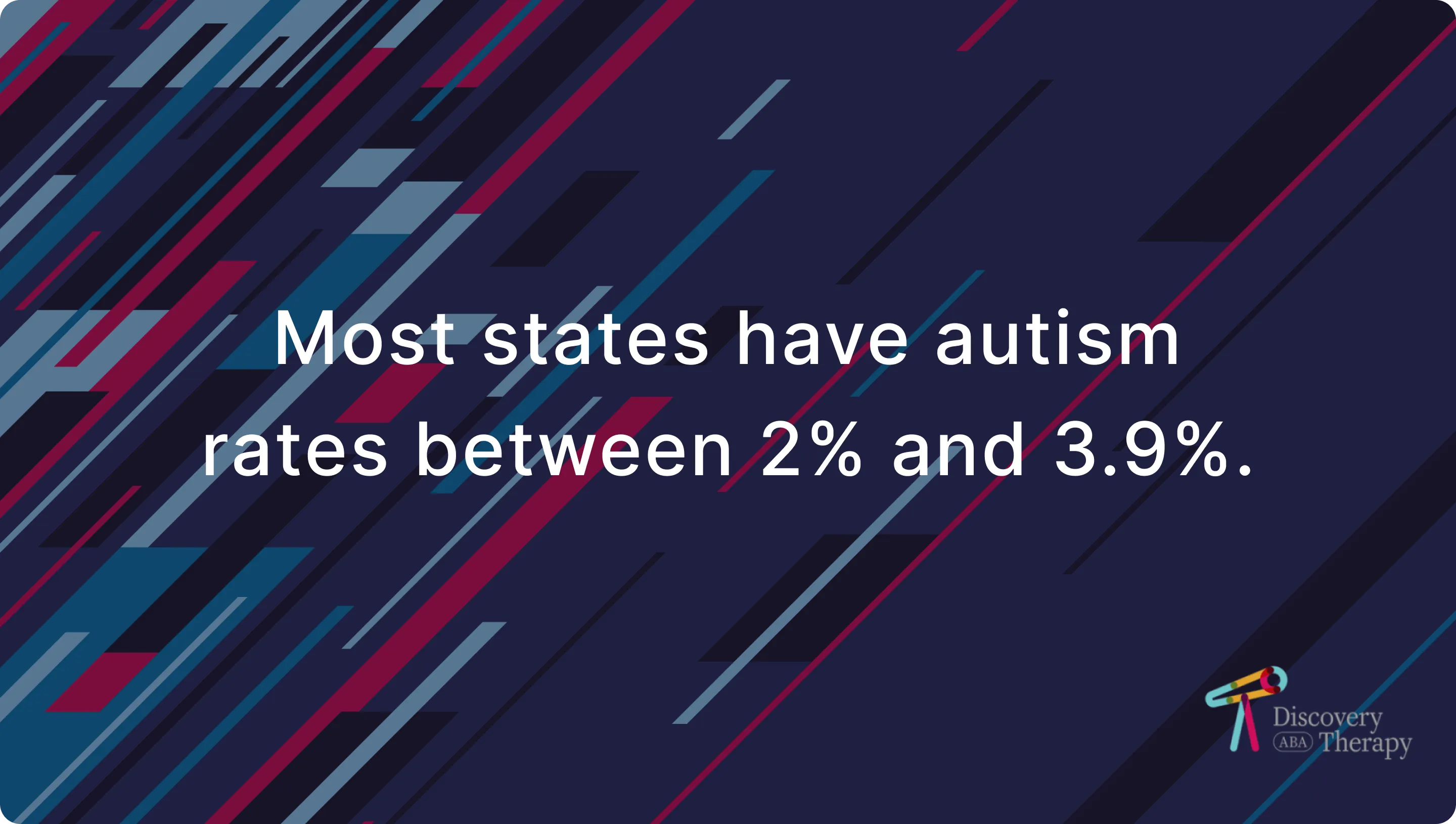
- Most states have autism rates between 2% and 3.9%.
- The states with the highest prevalence of autism diagnoses are Rhode Island, Maryland, and Florida, all with rates of over 4%.
- There are 10 states that have an autism prevalence of less than 2%.
- The highest rate is in Florida at 4.88%.
- The lowest rate of diagnosed autism is in Texas at 1.54%.
Autism rates fluctuate throughout the U.S. It’s possible that states like Florida have more effective screening processes and special education interventions.
Autism Rates by Country

Autism Demographics
Autism Rates by Gender
- About 4 times as many boys have been diagnosed with autism as girls.
- Research shows that girls are underdiagnosed, meaning that the ratio of boys to girls with autism might actually be just 1 to 2.
- In one study, the ratio fell from 4.2 to 3.3 boys for every girl when researchers changed how they evaluated whether the participants had autism.
- In 1995, a Danish study found that 8 boys were diagnosed with autism for every 1 girl, but within 15 years, the ratio had dropped to 3 boys for every 1 girl.
Autism Rates by Race & Ethnicity
- The CDC states that autism is prevalent across all races and ethnicities, but it is sometimes under diagnosed in certain groups.
- White children were shown to have an autism prevalence ratio of about 1.1 to Black children in 2014.
- In 2014, white children were shown to have an autism prevalence ratio of about 1.2 to Hispanic or Latino children.
- In 2006, the prevalence ratio of autism in white children versus Hispanic or Latino children was 1.7, significantly higher than the 2014 rate.
Autism Rates by Age
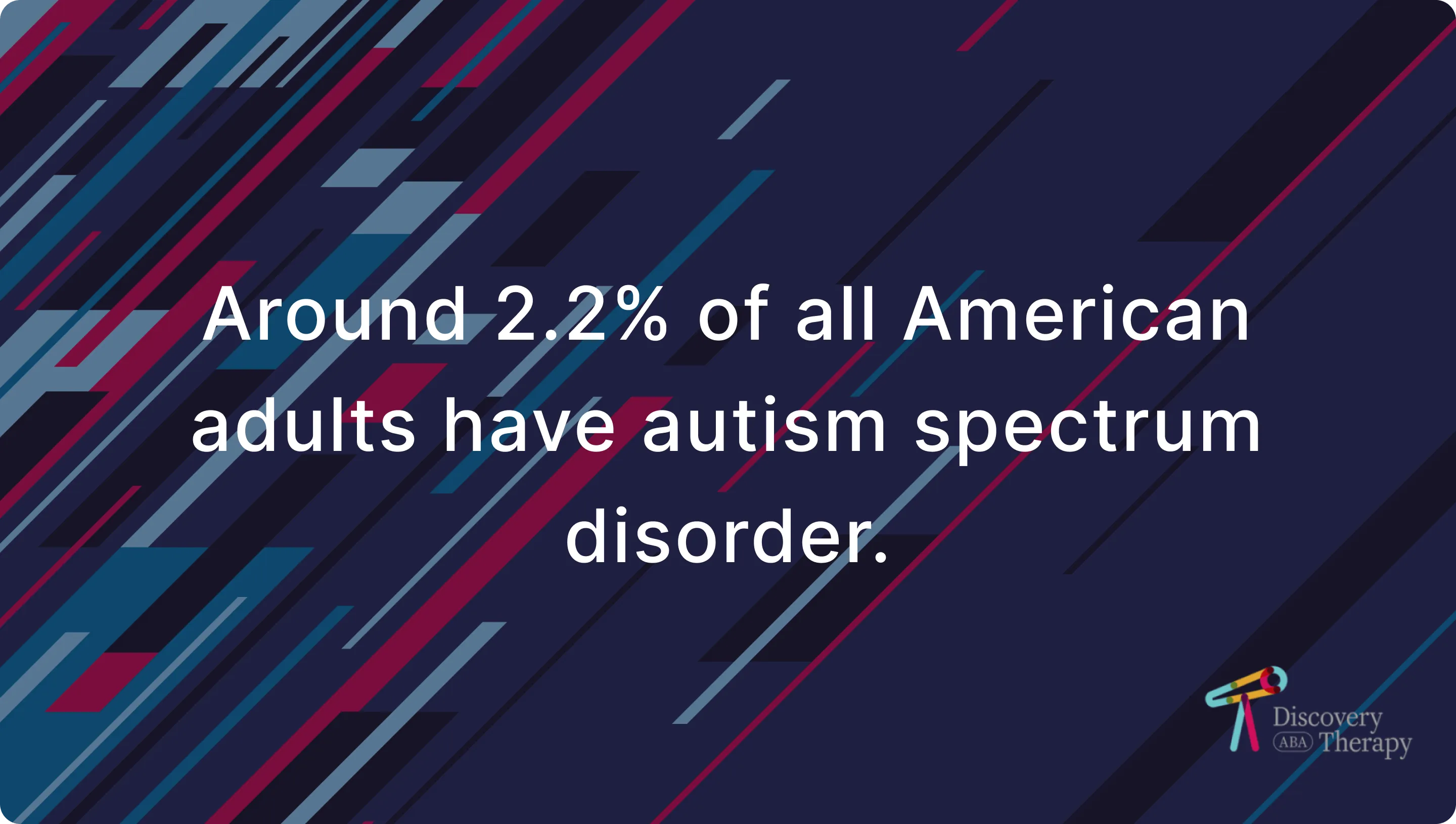
- Around 2.2% of all American adults have autism spectrum disorder.
- Autism rates are usually calculated based on children, with most diagnoses being given to children.
- Autism screenings are recommended for children when they reach 18 and 24 months old, as autism diagnoses are fairly reliable by age 2.
- The average parent will discuss concerns about their child’s development with their primary care pediatrician when they are a little over 2 years old.
Autism Rates in Adults
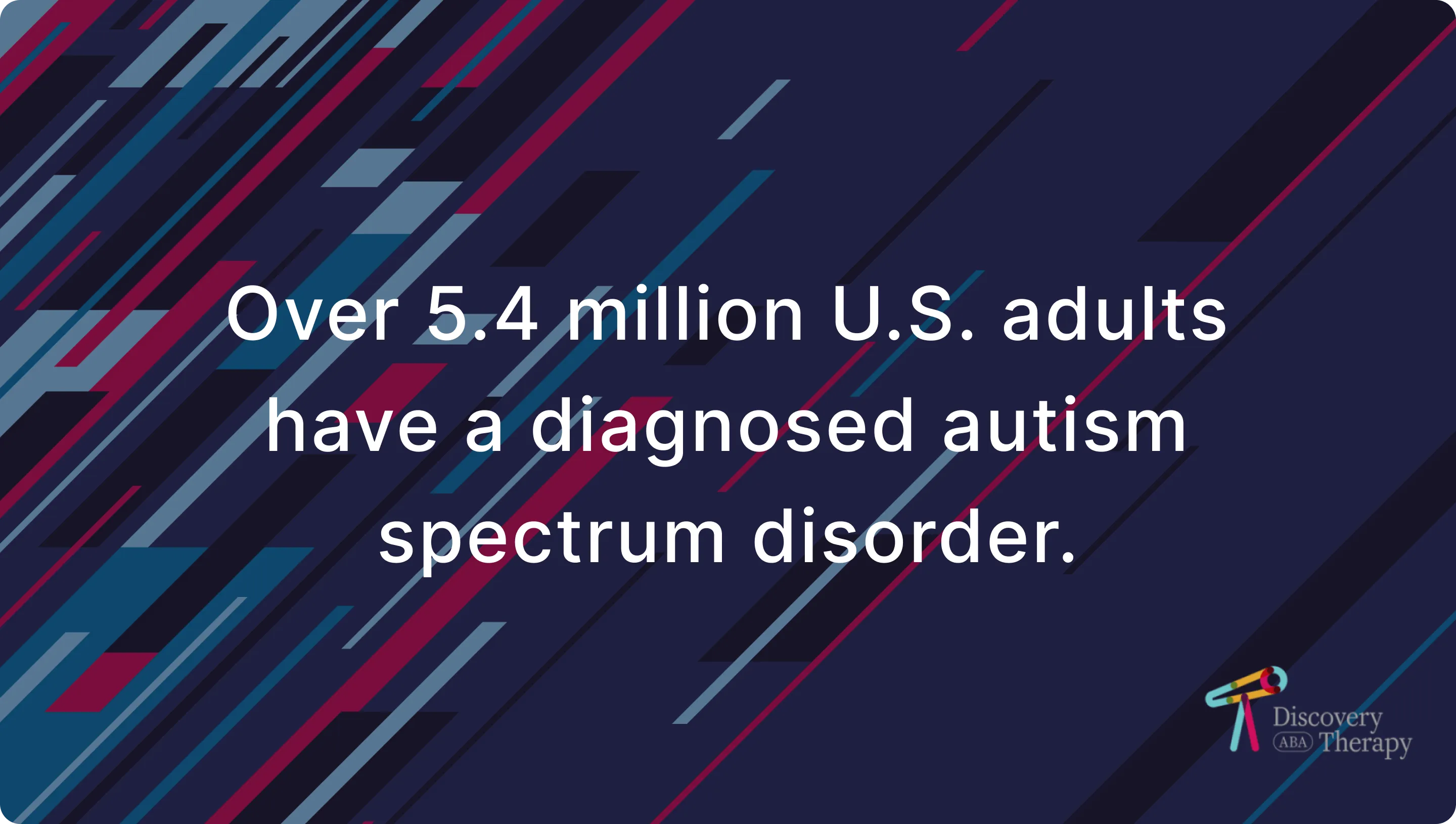
- Over 5.4 million U.S. adults have a diagnosed autism spectrum disorder.
- In 2020, the CDC stated that 2.2% of American adults have autism.
- In 2018, about 85% of college graduates with autism were not employed.
- About 75% of adults in the U.S. who have autism are either underemployed or fully unemployed.
- About 93% of adults in the U.S. with autism stated that the COVID-19 pandemic had had a negative impact on their overall mental health.
Autism Economic Costs

- The cost of caring for Americans with autism had reached $268 billion in 2015, and estimates from 2015 showed that autism-related care could cost the U.S. up to $460 billion by 2025.
- Autism economic costs are calculated based on factors like healthcare, special education, and government assistance.
- Healthcare for autism costs significantly less per person in countries like Canada and Denmark, which have universal healthcare systems.
Intervention & Support For Autistic Individuals
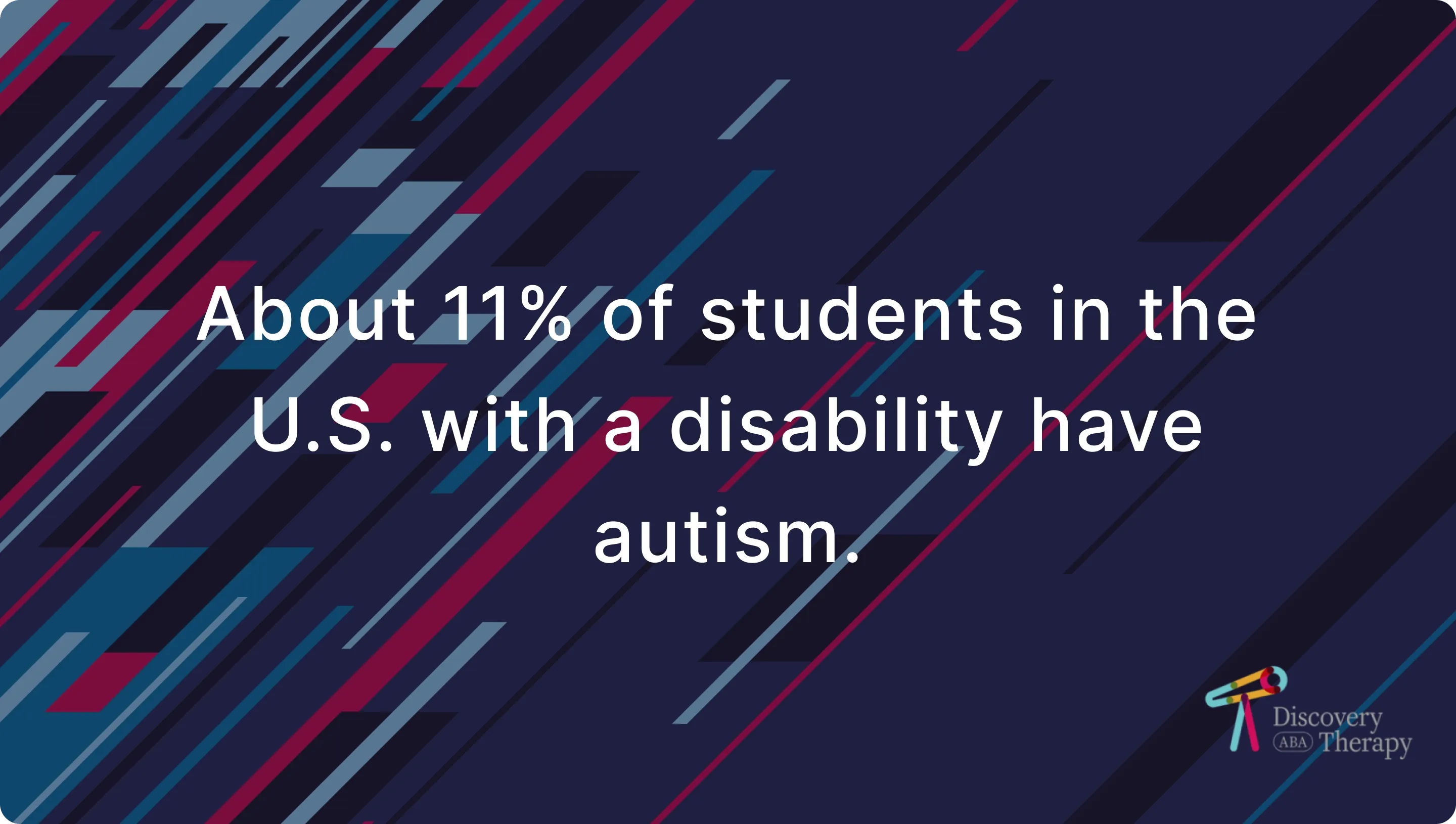
- About 11% of students in the U.S. with a disability have autism.
- Special education, early intervention, and self advocacy are the most important tools for autistic people to thrive.
- About 40% of children with autism don’t speak, so finding methods of nonverbal communication is crucial.
- Many autistic people are diagnosed and receive familial and educational support before the age of 5.
Associated Medical & Mental Health Conditions
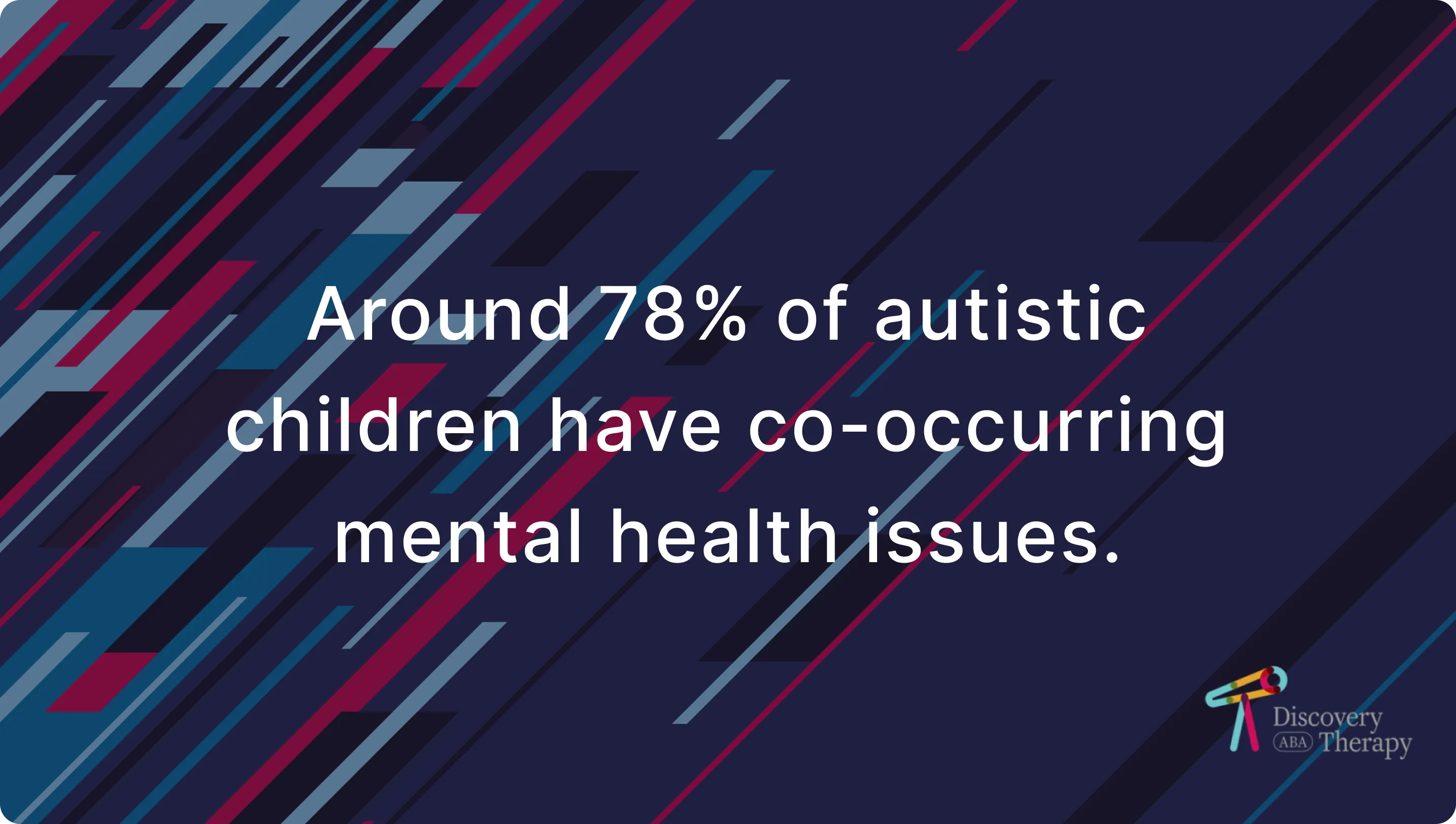
- Around 78% of autistic children have co-occurring mental health issues.
- 75% of the autistic population is underemployed or unemployed.
- 40% of autistic children are nonverbal. That makes communication more difficult for them.
- Mental health conditions affect almost 80% of children with autism.
- Around 80% of children with autism have some trouble with their motor skills, like walking, balancing, or writing.
Autism Unemployment Rate
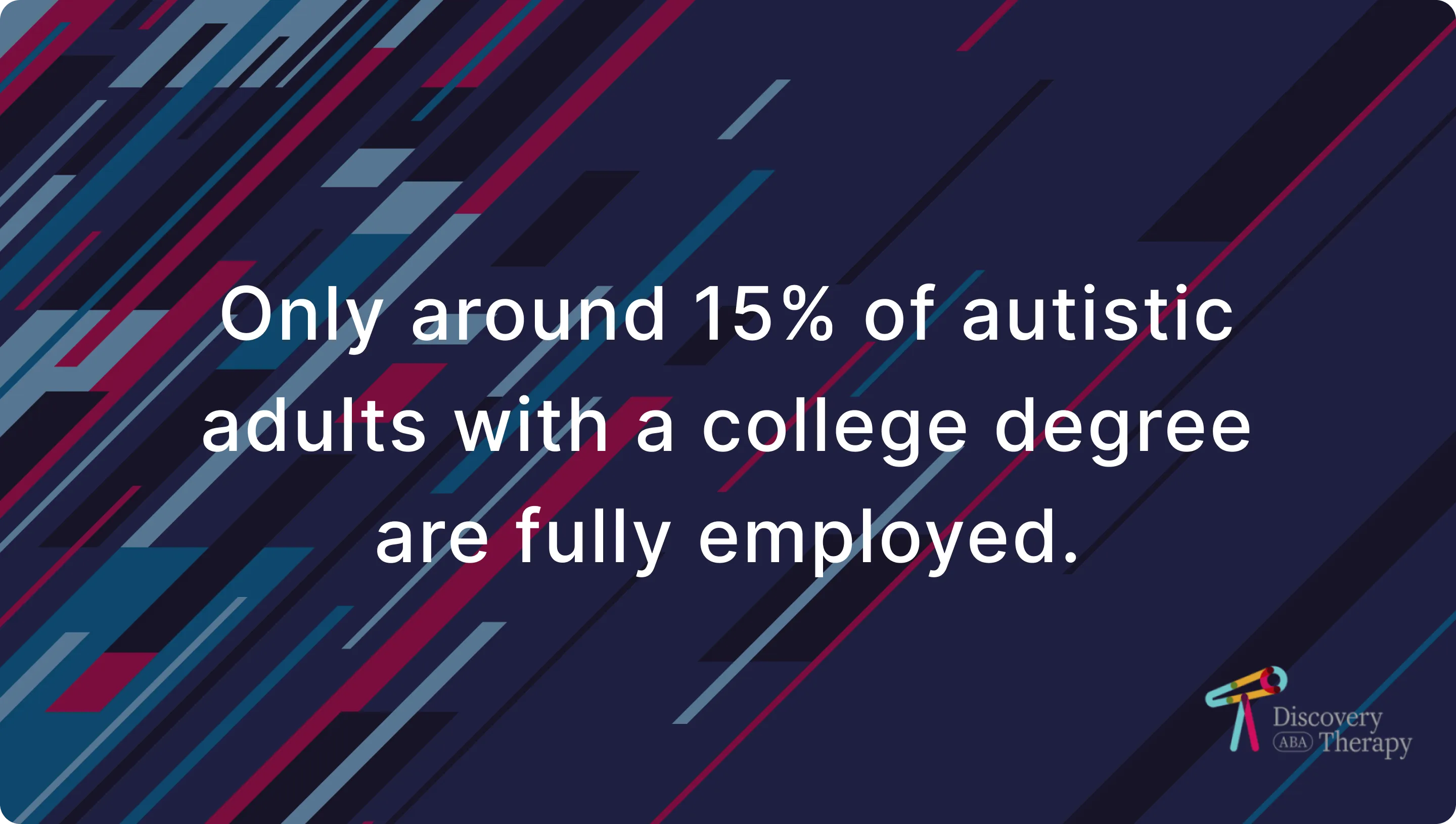
- Only around 15% of autistic adults with a college degree are fully employed.
- Only around 25% of autistic adults in general are fully employed.
- Only around 21% autistic young adults are currently or were recently employed.
- It is difficult to receive social security benefits as an autistic adult, since you have to pay into the program before you can benefit from it.
Autism Family Life/Marriage Statistics
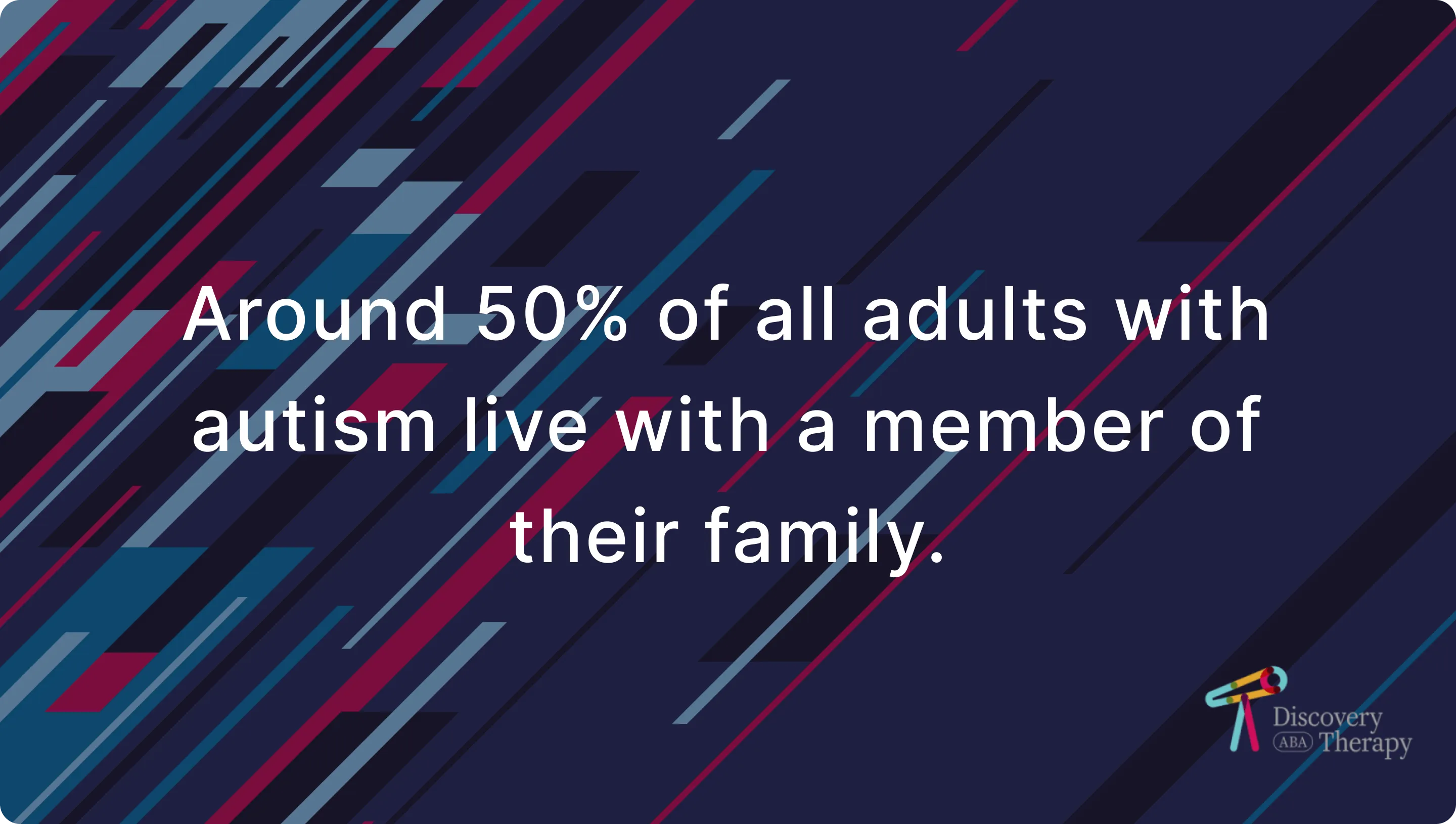
- Around 50% of all adults with autism live with a member of their family.
- Old research shows that about 5% of autistic adults are married or have been married in the past.
- 9% of autistic adults are married, while 32% have a romantic partner. For comparison, around 50% of non-autistic adults are married.
- Researchers believe that romantic relationships should be considered when making transitional plans for autistic people from childhood to adulthood.
There are concerns that autistic adults may have limited independence in how they conduct their relationships.
Education for Autistic Individuals
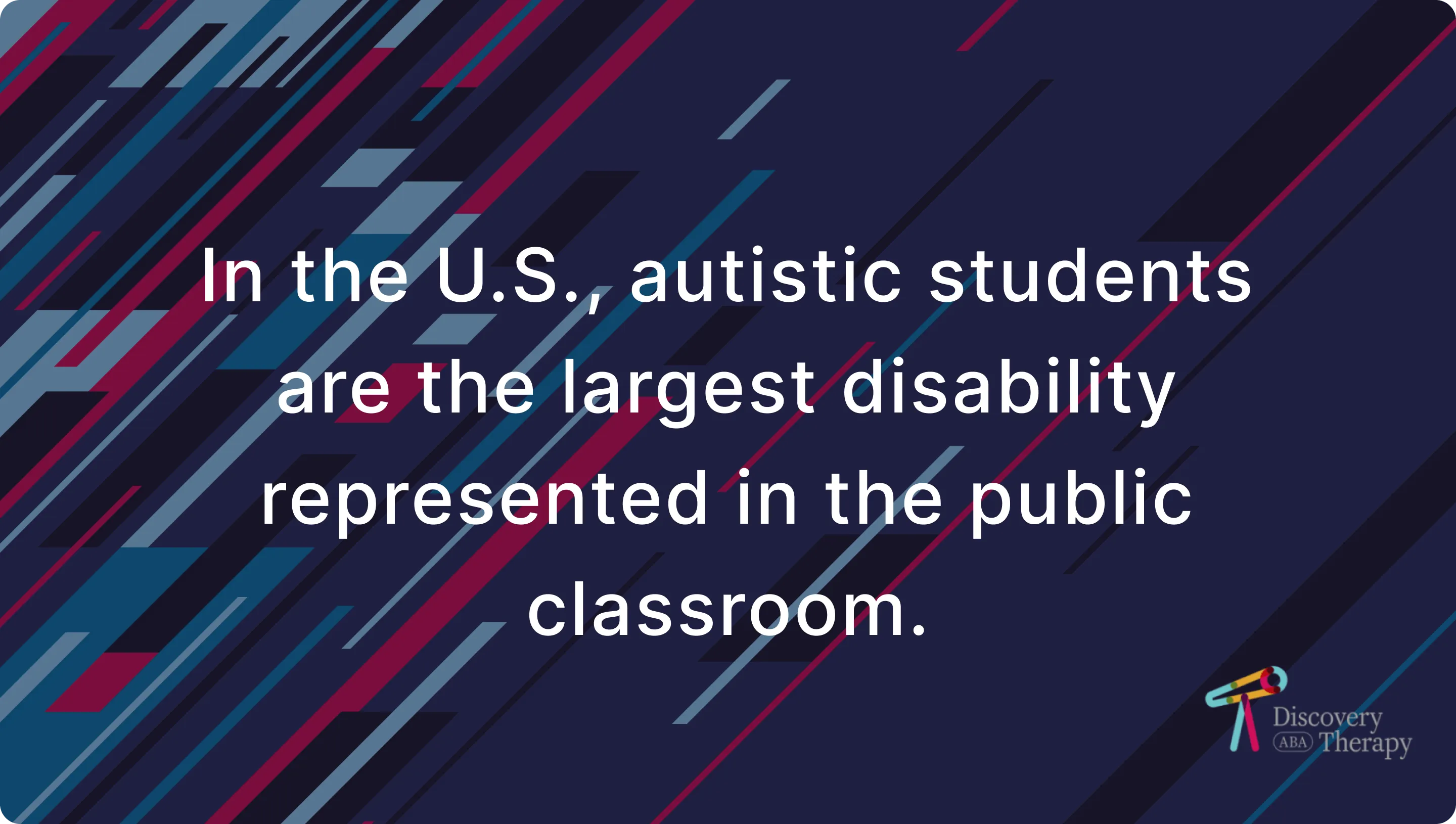
- In the U.S., autistic students are the largest disability represented in the public classroom.
- One survey showed that about 35% of young people with autism had at least some college education.
- In the first two years after high school, about half of the autistic young adults in the U.S. were not employed or enrolled in college.
Sources
Reach out to us
Contact us
Service available
North Carolina, Nevada, Utah, Virginia
Service will be available soon
New Hampshire, Maine
Available through sister company
Arizona, Colorado, Georgia, New Mexico, Oklahoma, Texas
.avif)

